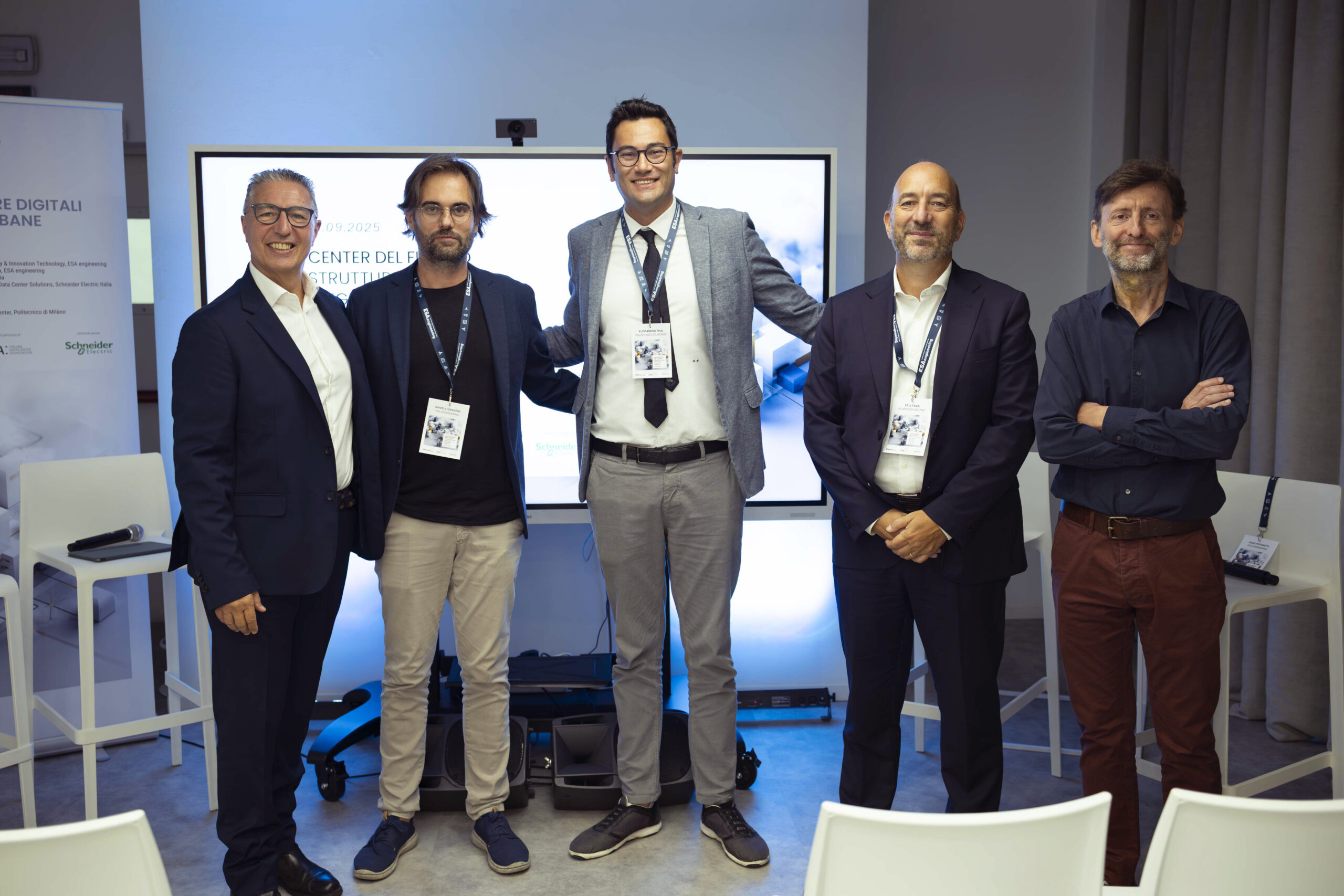On September 16, 2025, ESA engineering hosted the talk “The Data Center of the Future: Digital Infrastructures and Urban Strategies” at its Milan headquarters.
At a time when the demand for digital infrastructure is growing rapidly, the event offered a reflection on the role of data centers within the Italian territorial, urban, and infrastructural context. Moving beyond the vision of the data center as a mere “technical box,” the discussion focused on the systemic implications of these facilities: from urban planning to resource management, from integration into masterplans to their potential contribution to the virtuous functioning of entire urban and industrial districts.
Through a multidisciplinary perspective, the speakers discussed strategies for design, siting, and coexistence with the territory, to explore how data centers can evolve from simple containers of data into active and synergistic nodes of the infrastructural fabric.
The event was organized by ESA engineering, with the support of Schneider Electric as technical partner and under the patronage of IDA – Italian Data Center Association.
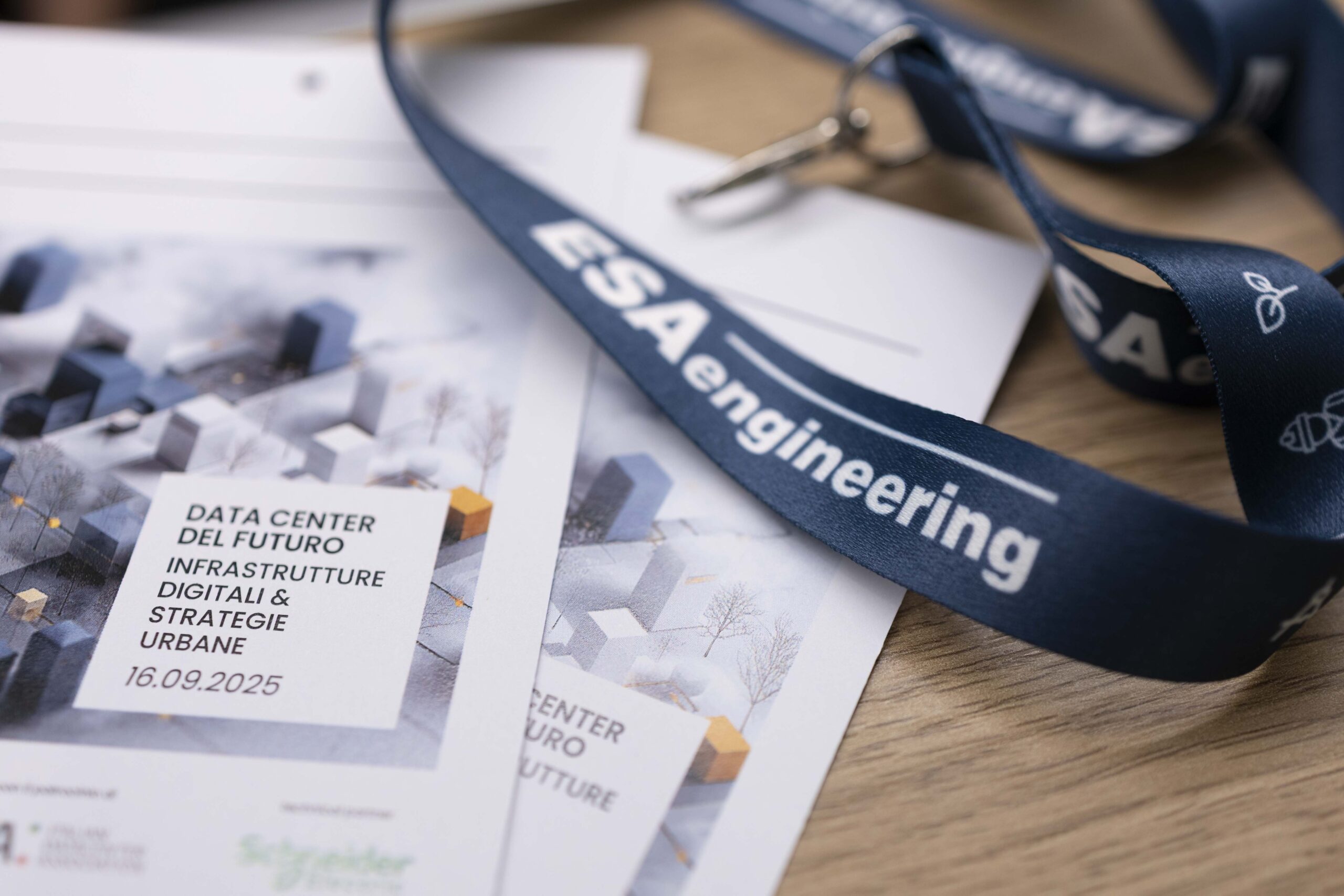
The event was opened by Francesco Gori, CEO of ESA engineering, who introduced the topic by highlighting its challenges and provocations. He then handed the floor to the moderator to start the discussion.
Alessandro Piva, Director of the Data Center Observatory at Politecnico di Milano, clarified the approach of the talk:
“Today we don’t want to address the topic only from the technical perspective of the ‘box’. Rather, we want to understand how these buildings fit into the urban context, what value exchanges they can generate, and what opportunities they offer to give resources back to the community. It is a less debated perspective, but for us the most interesting one.”
Piva introduced the three strands of the discussion: scenarios and perspectives, integration with the territory, and technologies and methodologies.
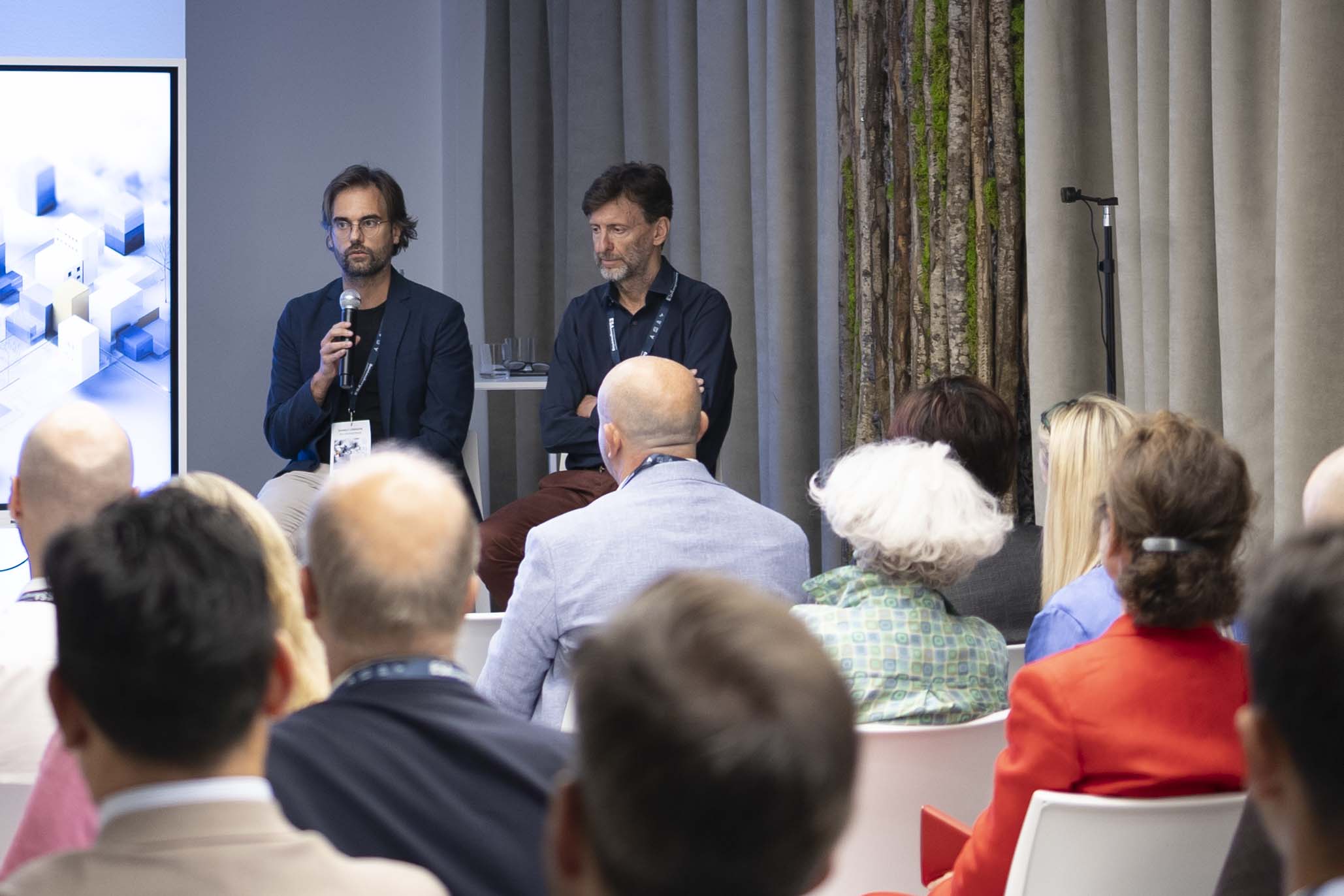
Scenarios and perspectives: data centers as infrastructural nodes
The first intervention came from Daniele Lorenzini, Director – Head of Sustainability & Innovation Technology at ESA engineering, who outlined the current scenario:
“Data centers are not new in Italy, but today we are experiencing an extraordinary surge, driven by artificial intelligence, machine learning, and cloud services. To avoid chaotic growth, we need a broad vision, both in terms of urban planning and technical aspects. A data center can no longer be seen as just a building: it is an infrastructural node, and as such it must be planned.”
Lorenzini then added a regulatory perspective:
“Today we see a national push to unify the regulatory framework, to plan the ‘rules of the game’ more coherently from an urban perspective. At the same time, the issue of technical regulations remains open: the data center is a unique object, where the shell matters little compared to the content, and therefore requires a specific approach.”
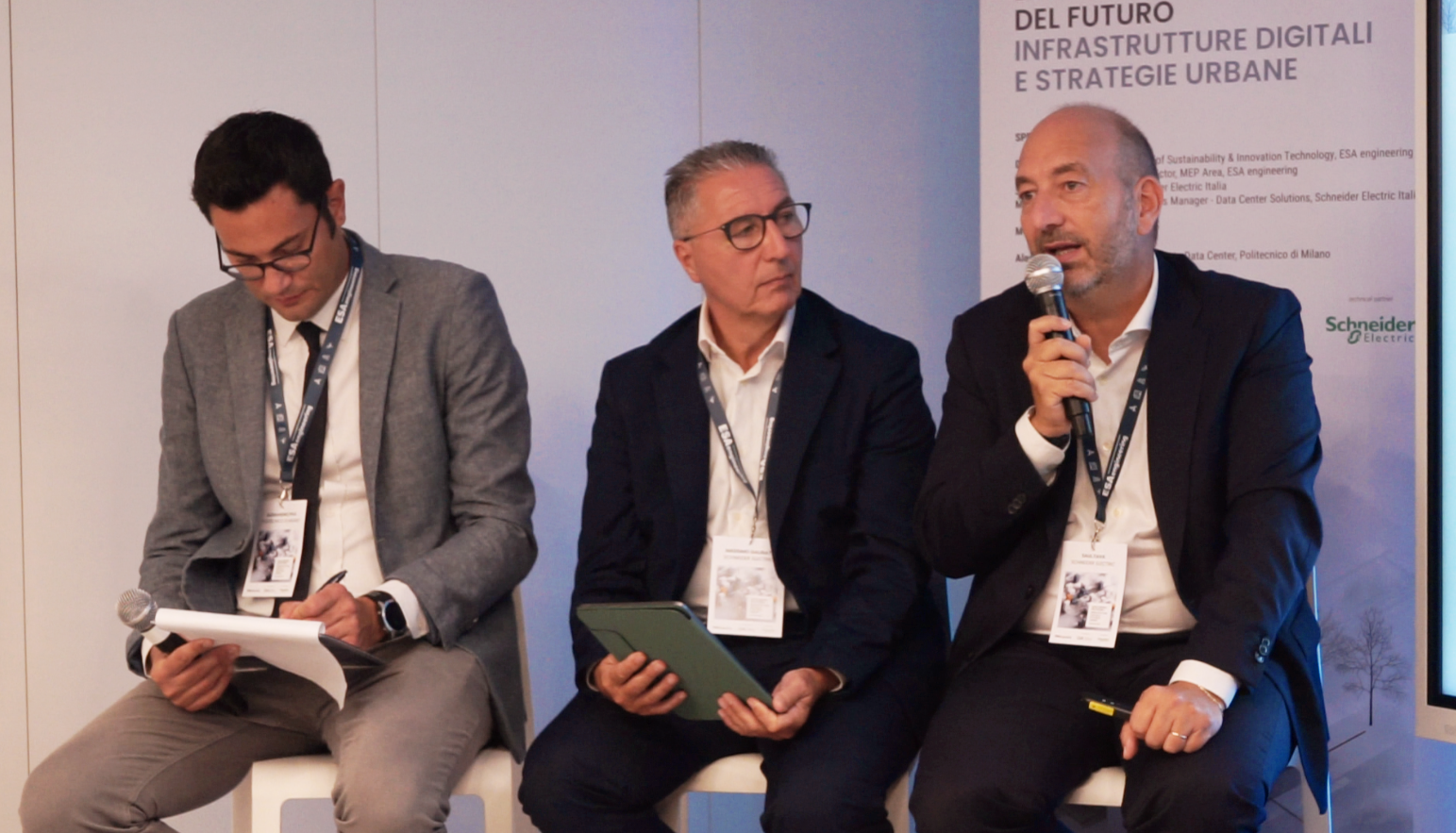
Following him, Saul Fava, Vice President, Schneider Electric Italy, described a challenge unfolding on three levels:
“The saturation of FLAP-D markets has made Milan a highly attractive hub for investments. In the next four years, the required computing capacity will increase fivefold. The challenge is threefold: first, optimizing the infrastructure that powers processors while ensuring efficiency and reliability; second, developing from chip to chiller solutions to capture and dissipate heat close to its source; and finally, adopting district models to return this energy to urban networks capable of reusing it.”
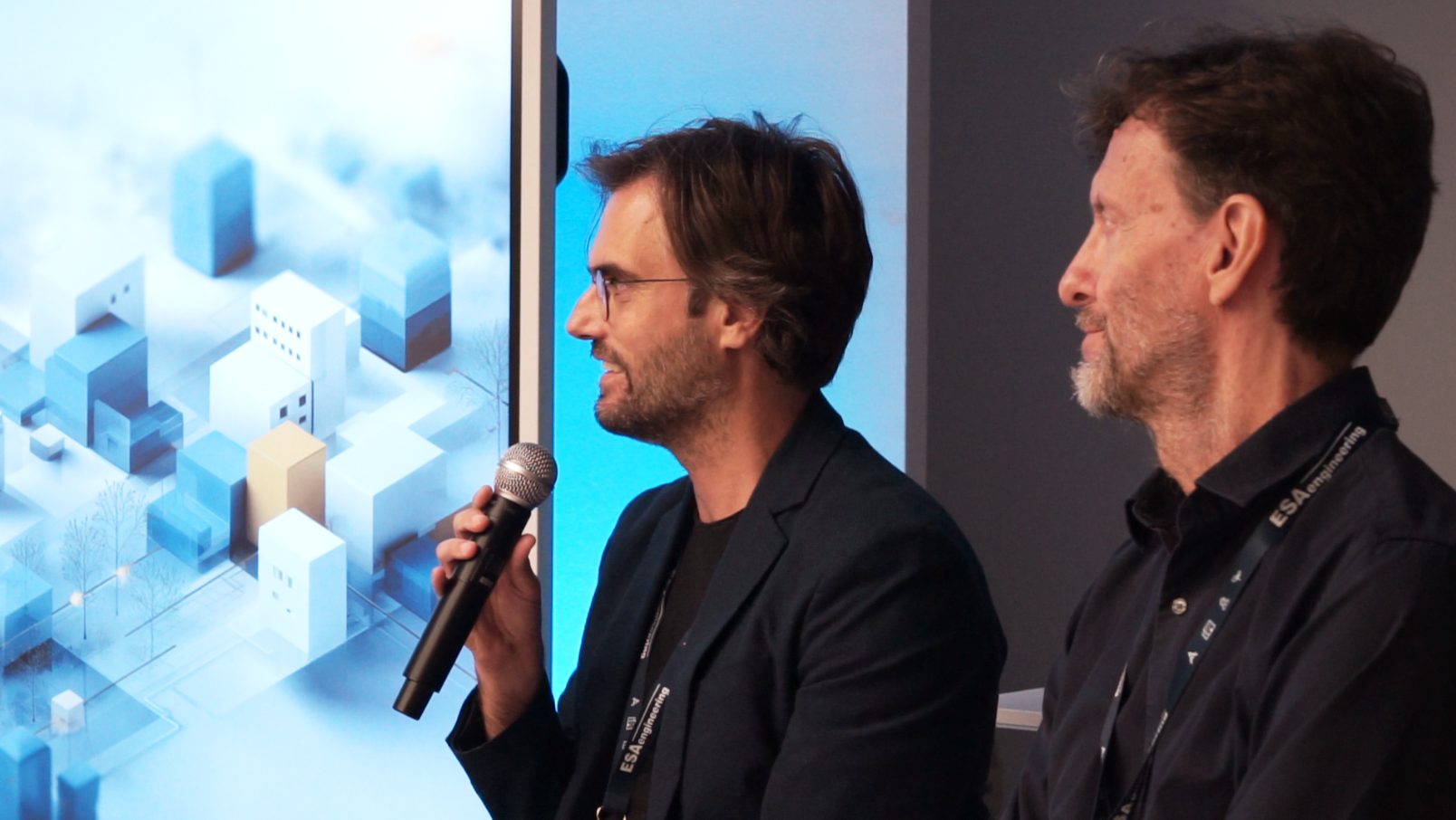
Integration with the territory: planning and environmental metrics
Lorenzini returned to the theme of siting, stressing the importance of integrated planning:
“Redeveloping brownfield sites is an opportunity, but it is essential to carefully assess their compatibility with the needs of data centers. Lombardy Region has already launched a mapping of non-suitable areas: this is an important first step, because data centers must become part of urban planning rather than remain isolated elements.”
He then turned to European environmental metrics, which are already monitored but not yet linked to binding targets:
“There are parameters that measure energy use, water consumption, renewable coverage, heat reuse, and carbon footprint. At present, no mandatory targets are in place, but this will probably be the next step. In general, PUE remains the benchmark metric, as it measures the ratio between total input energy and the energy actually delivered to servers. Today, these metrics are reported; tomorrow, we will need to learn how to prioritize them according to context, in order to avoid harming territories.”
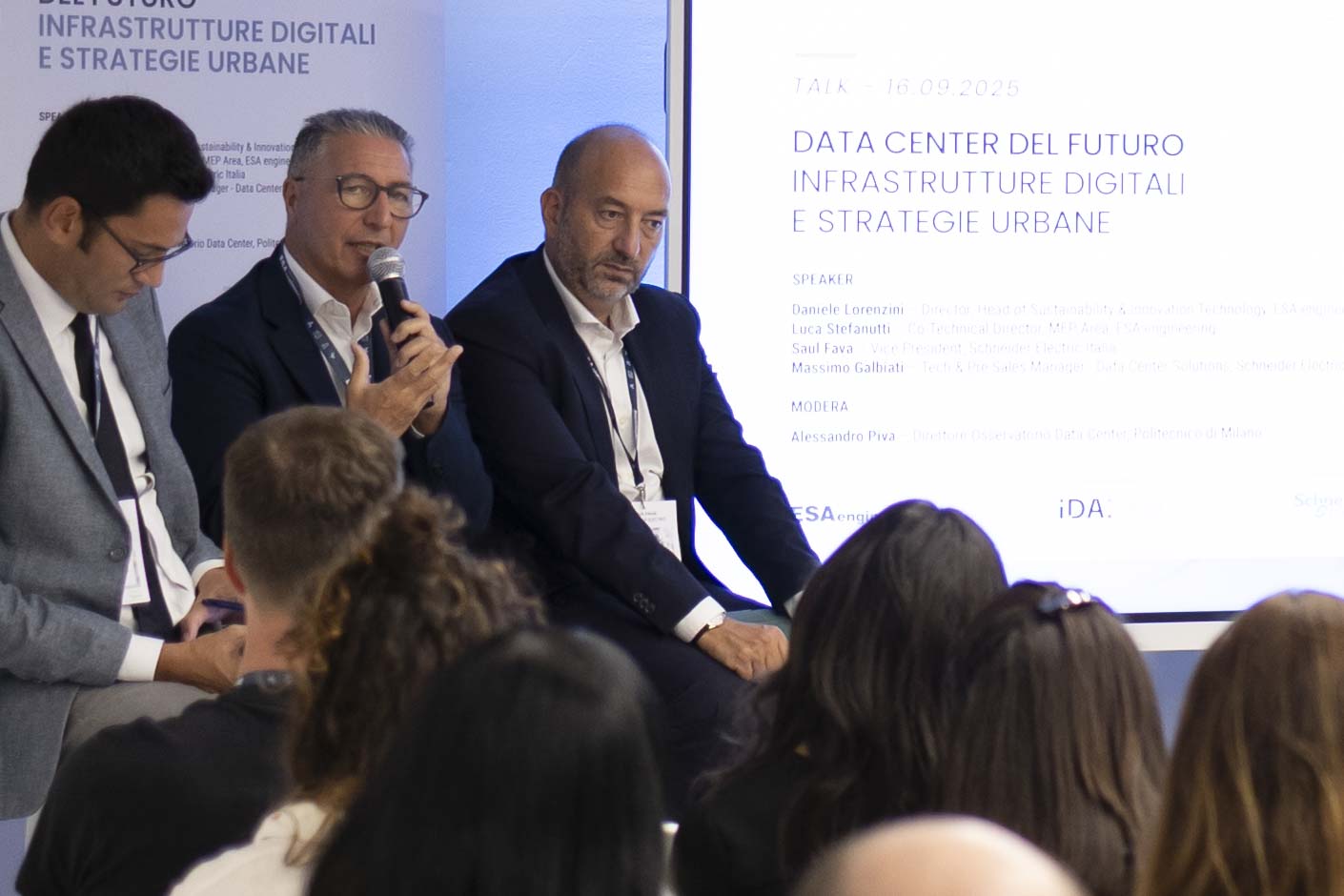
Building on this, Massimo Galbiati, Tech & Pre-Sales Manager – Data Center Solutions, Schneider Electric Italy, expanded on the operational side:
“PUE is still the most widespread metric, but it’s not enough. We must broaden our focus to include water use, renewables, CO₂, and above all the ability to recover thermal energy. Capturing and reusing heat is the real challenge for the sector: today it is reported, tomorrow it must become a binding objective, differentiated by geographic areas.”
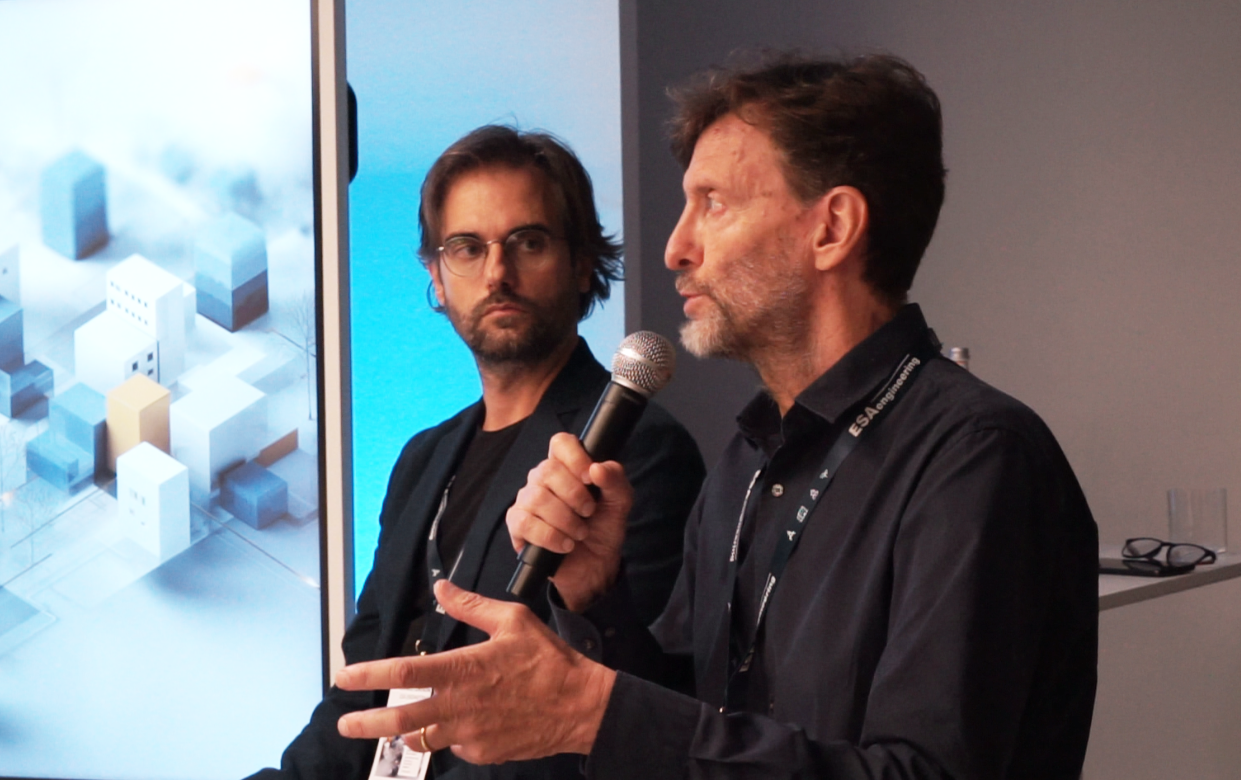
Technologies and methodologies
The discussion then moved to technological aspects. Luca Stefanutti, Co-Technical Director – MEP Area at ESA engineering, emphasized the link between technical innovation and urban regeneration:
“ESA is already involved in urban regeneration projects, and this allows us to clearly see the potential for transforming data centers into positive and active players in the recovery of urban areas. Heat recovery, for example, can supply buildings and districts, turning a by-product into a resource. Technologies such as liquid cooling open up new opportunities, while approaches like air free cooling or evaporative cooling are problematic: they generate urban heat islands or involve high water consumption. When included in coordinated projects, however, heat recovery becomes an environmental and economic advantage, even attracting investors.”
Galbiati confirmed the centrality of this approach:
“Liquid cooling is not new, but today it is the most effective lever to address both present and future challenges. Heat management will be the true strategic theme for the sector.”
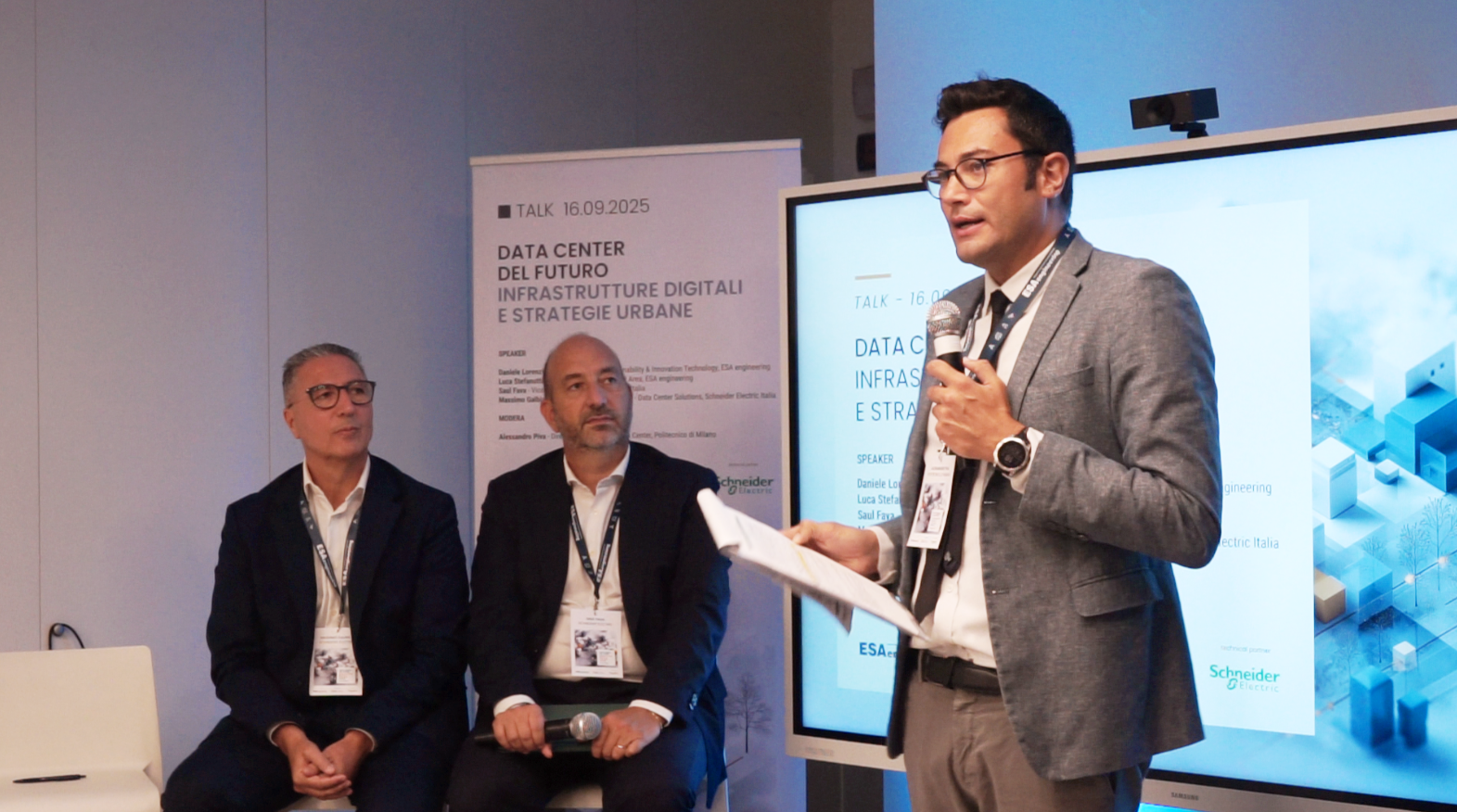
A synthesis of the debate
The debate revealed a shared vision: data centers can no longer be seen as simple buildings but as infrastructural nodes that impact territories and communities. Planning, environmental metrics, and new heat management technologies are the three key dimensions driving their evolution, with the aim of transforming them from data containers into engines of shared value.
Metrics are currently reported, but the next step will be to prioritize them according to different territorial contexts, ensuring virtuous integration and avoiding environmental damage. Looking ahead, the hope is that the European community will also set clear targets, differentiated by territorial zones, to guide development more fairly and sustainably.
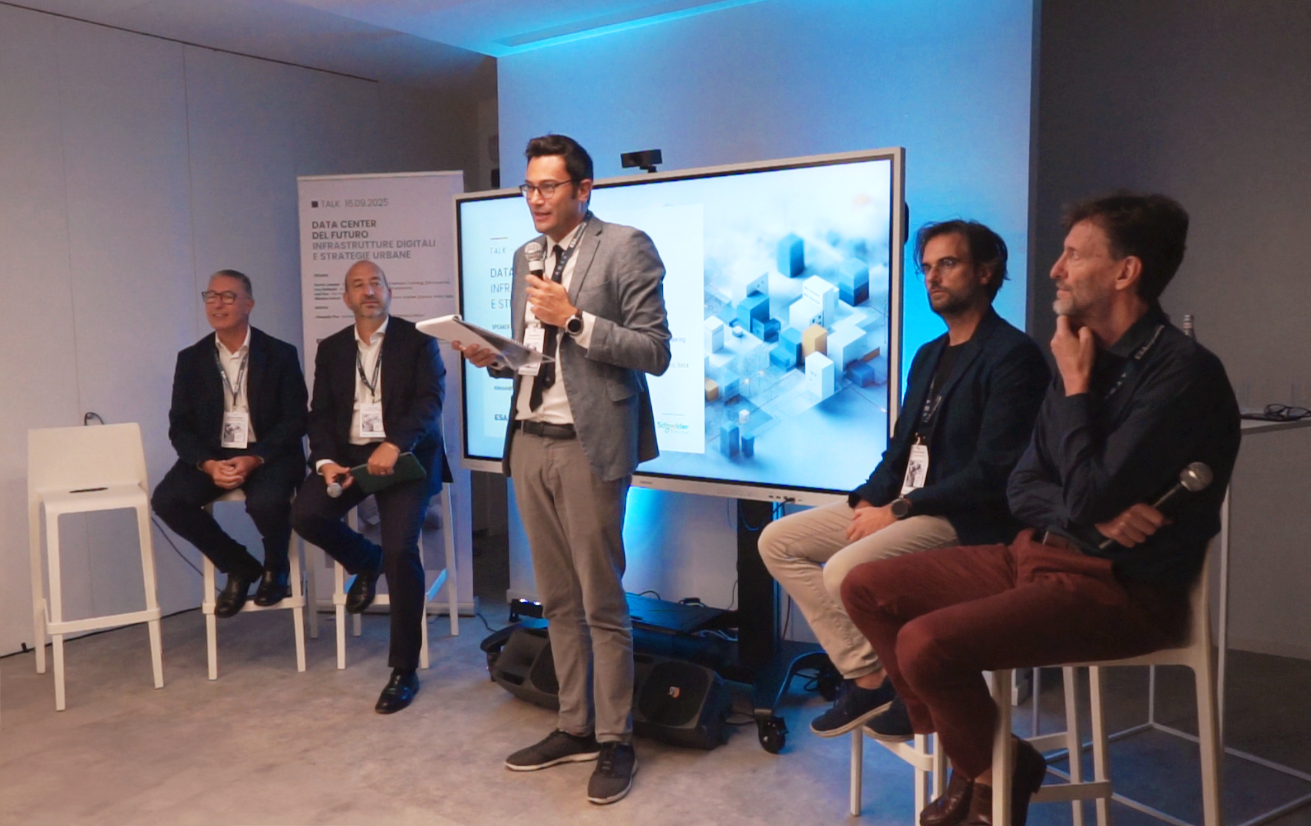
Looking ahead
In the final part of the talk, the speakers shared their visions for the data centers of tomorrow:
- Saul Fava emphasized that AI-driven growth will continue exponentially, bringing both challenges and opportunities for innovation in design.
- Luca Stefanutti and Daniele Lorenzini called for rethinking data centers as “positive and active players, capable of giving back value to the territory.”
- Massimo Galbiati stressed the need for a clear regulatory framework, recognizing data centers as strategic infrastructural nodes.
